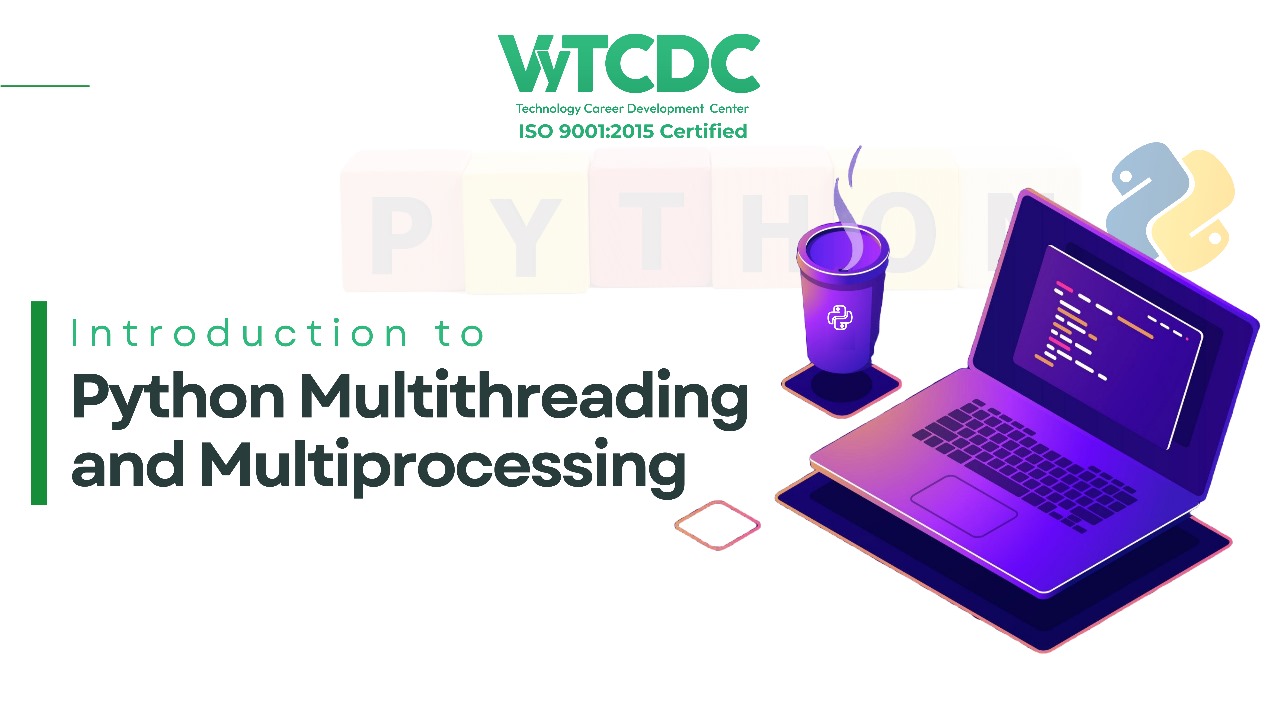Introduction
Python is a versatile and powerful programming language, making it an excellent choice for developers seeking to create scalable and efficient applications. One of Python’s key strengths lies in its support for parallel and concurrent programming, facilitated through multithreading and multiprocessing.
In this blog, we will explore these two essential programming techniques, their use cases, and how they can enhance your Python programming skills. Whether you’re attending a Python course in Chennai, pursuing an online Python course certification, or enrolled in a Python developer course, this guide is your gateway to understanding these advanced topics.
What is Multithreading in Python?
Multithreading in Python involves running multiple threads within the same process. Threads share the same memory space, which makes data sharing between threads seamless. The threading module in Python simplifies the implementation of multithreading.
Advantages of Multithreading
- Improved Performance: Allows for multitasking within a single application.
- Responsive UI: Ideal for GUI applications, ensuring the interface remains responsive.
- Efficient Resource Utilization: Best suited for I/O-bound tasks like file reading, network requests, and database interactions.
What is Multiprocessing in Python?
Multiprocessing enables Python programs to create separate processes that execute independently, each with its own memory space. This approach overcomes the Global Interpreter Lock (GIL) limitation in Python, making it a preferred choice for CPU-bound tasks.
The multiprocessing module allows developers to spawn processes effortlessly.
Advantages of Multiprocessing
- True Parallelism: Each process runs on a separate core, achieving concurrent execution.
- Scalability: Ideal for tasks requiring significant computational power, such as machine learning and data processing.
- Fault Isolation: Errors in one process do not affect others.
Key Differences Between Multithreading and Multiprocessing
|
Python also plays an integral part in data science automation. Like a well-oiled machine that handles repeated operations, Python may automate time-consuming data science activities.
Fun Fact: Python’s automation capabilities have resulted in widespread application in fields such as banking, where it automates trading processes.
Python and Big Data: Navigating Massive Databases:
Python demonstrates its capability to handle massive datasets efficiently. When presented with data that is too vast to manage on a single machine, Python provides tools such as Apache Spark, which enables distributed data processing over numerous systems.
Fun fact: Netflix utilizes Apache Spark to recommend TV episodes and movies based on customer interests. With the capacity of distributed data processing, it can evaluate billions of user interactions in real-time!
Python and AI: Charting New Frontiers:
Python also performs well in artificial intelligence (AI) applications. Libraries like TensorFlow and Keras put Python at the forefront of deep learning, enabling data scientists to create neural networks capable of performing complicated tasks such as image recognition and natural language processing.
Fun Fact: Google’s TensorFlow is a famous Python library for machine learning and deep learning, with applications ranging from recommendation systems to self-driving cars!
Enhancing Your Skills with Python Courses
If you’re interested in delving deeper into Python programming, consider enrolling in specialized courses:
- Python Course in Chennai: Offers hands-on training with real-world projects, ideal for mastering Python multithreading and multiprocessing.
- Python Online Course Certification: A flexible learning option for those who wish to gain recognition in Python programming.
- Python Developer Course: Focuses on end-to-end Python development, covering both fundamental and advanced topics.
Challenges and Limitations
Multithreading Challenges
- Global Interpreter Lock (GIL):
- Python’s GIL restricts threads from being executed one at a time, even on multi-core processors, limiting true parallelism.
- Complex Debugging:
- Threads can interact in unpredictable ways, leading to race conditions or deadlocks.
Multiprocessing Challenges
- High Memory Usage:
- Each process has its own memory space, which can lead to increased memory consumption.
- Inter-Process Communication (IPC):
- Sharing data between processes requires mechanisms like Pipes or Queues, adding complexity.
Best Practices
When to Use Multithreading
- Use for I/O-bound tasks such as reading/writing files, making API calls, or interacting with databases. Example: A web scraper fetching data from multiple URLs simultaneously.
When to Use Multiprocessing
- Use for CPU-bound tasks such as image processing, large-scale data analysis, or running simulations. Example: Training machine learning models or processing large datasets.
Performance Measurement and Optimization
Profiling Tools:
Use tools like cProfile or line_profiler to identify bottlenecks in your code.
Balancing Thread/Process Count:
Optimal performance depends on balancing the number of threads or processes with available CPU cores and workload types.
Avoid Overhead:
Minimize the overhead of context switching in threads or excessive memory usage in processes.
Practical Applications of Multithreading and Multiprocessing
Web Development:
- Multithreading: Handling multiple client requests in server applications.
- Multiprocessing: Efficiently managing tasks like image processing or background computations.
Data Science and Machine Learning:
- Processing large datasets or parallelizing training across multiple cores.
Gaming and Graphics:
- Threads for rendering and handling player inputs simultaneously.
IoT and Robotics:
- Real-time sensor data processing using threads, while computational tasks run as separate processes.
Automation:
- Running automated tasks such as file backups, system monitoring, or batch processing with multiprocessing.
Conclusion
Understanding multithreading and multiprocessing in Python is essential for developers aiming to create efficient, scalable applications. Whether you’re optimizing I/O-bound or CPU-bound tasks, these techniques are indispensable for modern programming. Enhance your expertise further by joining a Python course in Chennai, pursuing an online Python course certification, or taking a comprehensive Python developer course to become a proficient Python developer.
Established in 2002, VyTCDC has been vy ventures’ premier technology incubator since 2002. It offers transformative technical training and internships across its specialized entities.
Contact Us:
Phone
+917338811773
+918925903732
Email: careers@vytcdc.com
Start your journey today and harness Python’s full potential!






